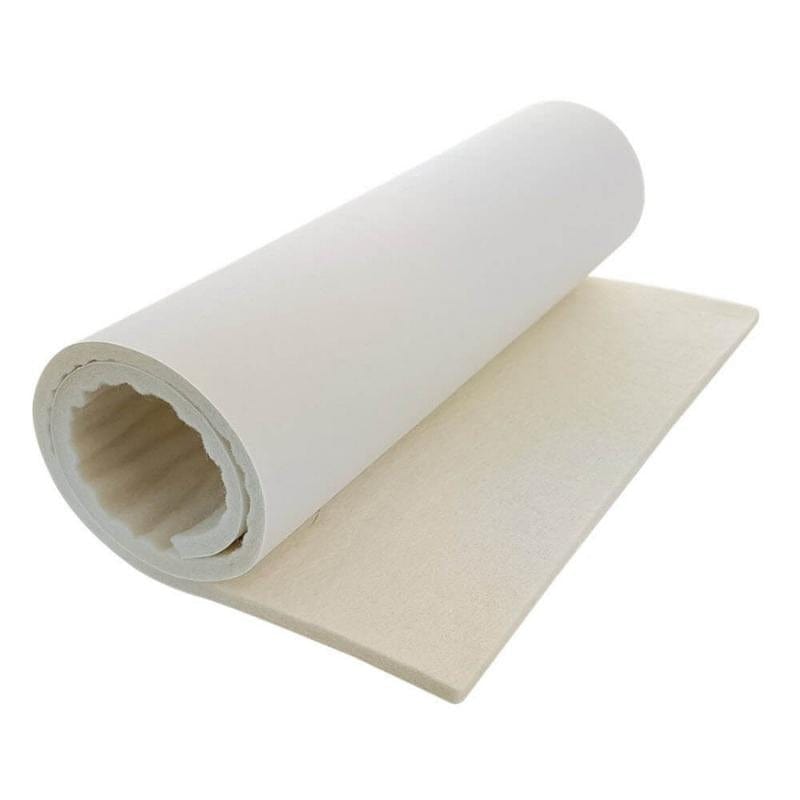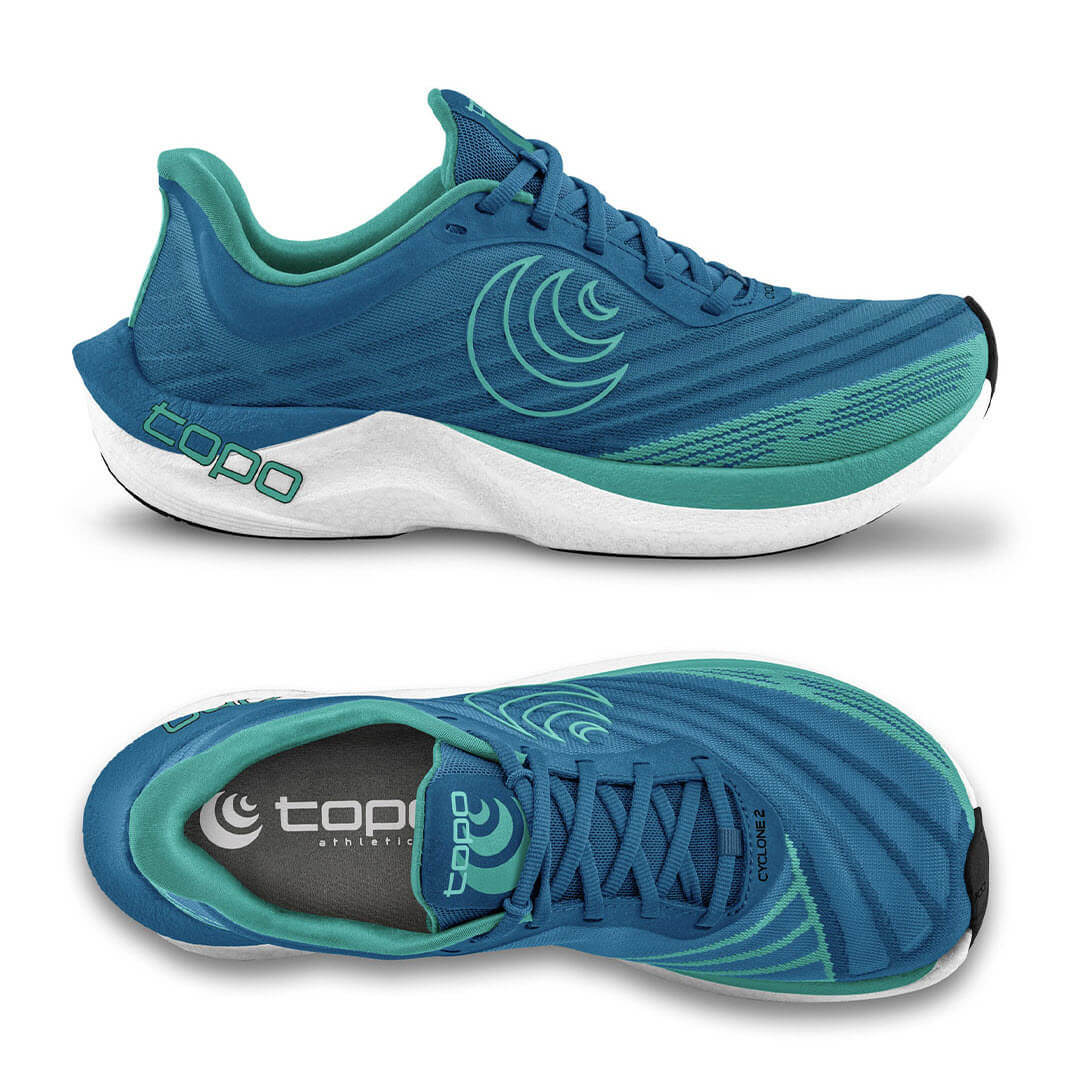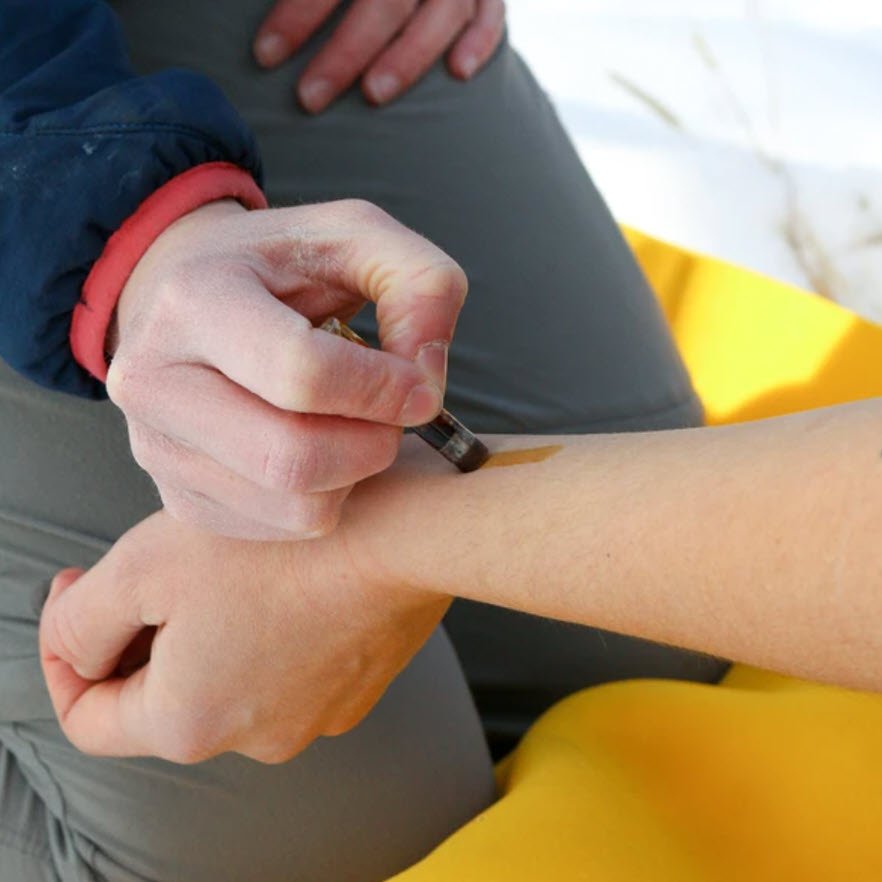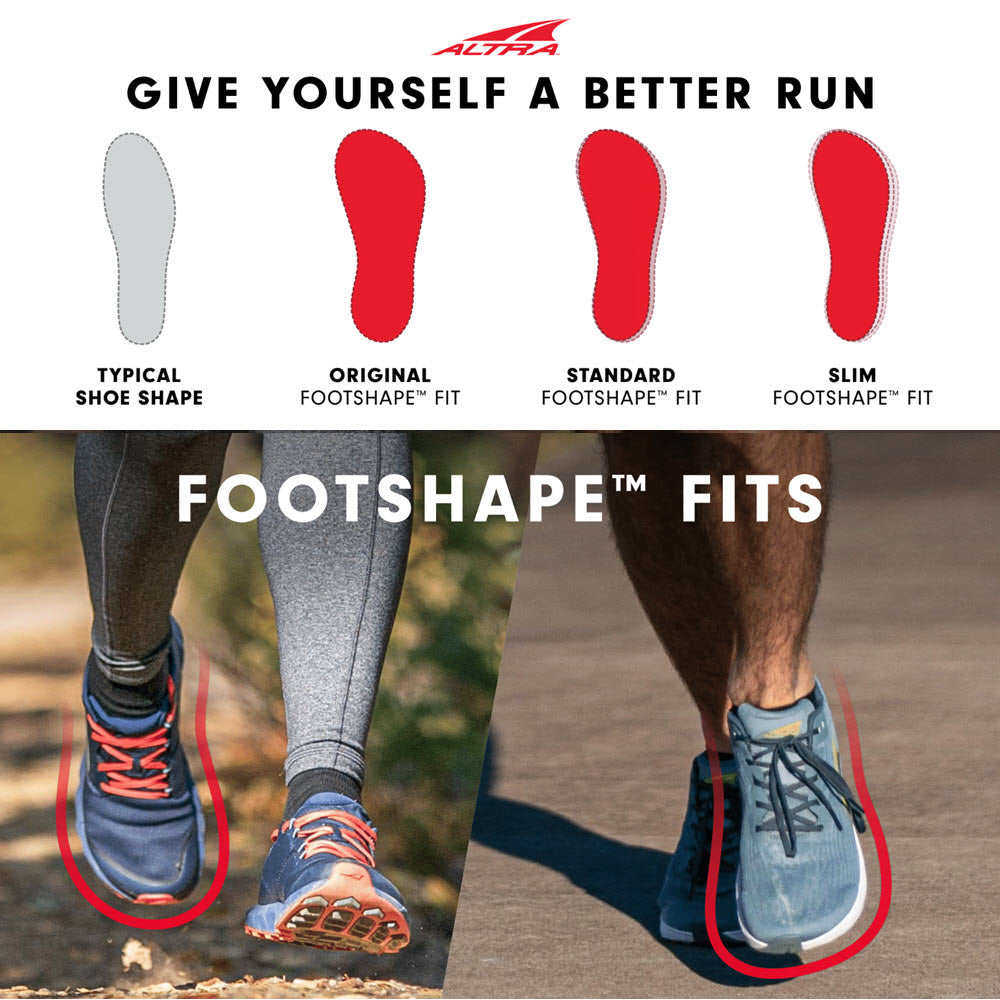Callouses (or calluses) and corns on feet are patches of thickened skin. The difference between the two is a callous is large in surface area but shallow and usually not painful. A corn on the other hand is small in surface area but deep. Corns get painful because the lump of thick skin presses down into deeper layers, onto the nerve endings.
What Causes Callouses and Corns on Feet?
Both callouses and corns are what we call hyperkeratosis (thickened skin). Dermatological conditions and infections like psoriasis, dermatitis and warts can cause hyperkeratosis. However, the cause of callouses and corns is purely mechanical. The mechanical stimulus is shear deformation. The skin’s response to repetitive skin shear distortion is togenerate more skin.
Aren’t Blisters Caused By Shear Too?
Yes, they are! If you’ve read any of my material about the cause of blisters, you’ll know thatshear distortions cause blisterstoo.
The difference is,blistersare the acute “all-of-a-sudden” manifestation of repetitive shear.Callouses and cornsare the chronic “day-after-day” manifestation of repetitive shear.
Skin Shear Distortions Result From The Combination of Several Factors:
- Bone movement
- Pressure
- Friction (the coefficient of friction)
Bone movementis particularly relevant to the build-up ofcallouson the feet. This can be obvious with some callouses under the ball of the foot – you can literally see where the bone moves back and forth under the skin to cause the build-up.
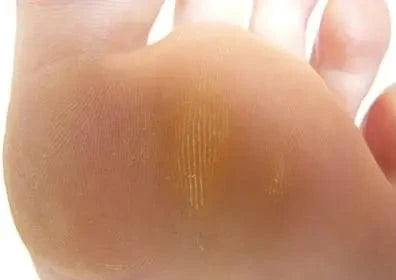
Callous under ball of foot. You can just imagine the second metatarsal head moving back and forth with every step to form this elongated callous. And less so under the third metatarsal head. Remember, this bone movement is occuring in the presence of weightbearing pressure, high friction levels within the shoe and repetition to form a callous. Source: customfootclinic.com
Pressureis particularly relevant tocornson feet. They are very discrete pinpoint lesions, leaving nothing to the imagination as to where the concentration of pressure is. But all three forces (friction, pressure and bone movement) contribute to the development of corns and callouses, withrepetitionbeing an important factor also. So, it’s quite common to see corns with surrounding callous, as in the before and after photos below from my clinic.
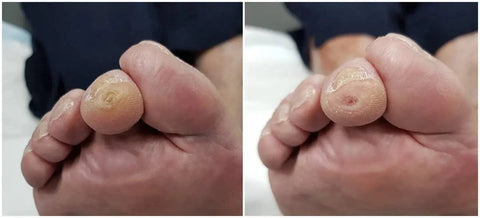
Before & After: This shows a corn on the tip of the second toe with surrounding callous. Nothing is left to the imagination as to where the concentration of pressure is on this toe.
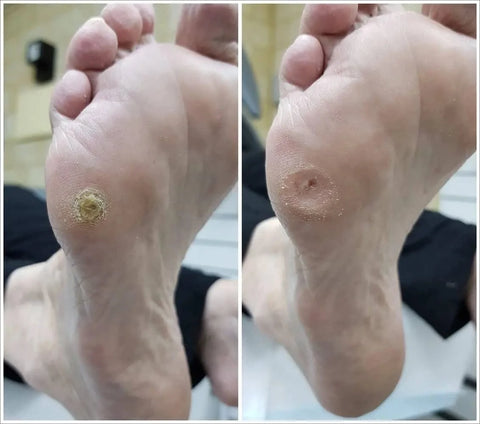
Before and After: A corn with surrounding callous under the 5th metatarsal head.
Frictionlevels, or more accurately the coefficient of friction, is to do with the level of slipperiness or stickiness between pairs of materials. Those materials include your skin, sock (hoisery), your insole and the lining material of your shoe. Some pairs of materials are more slippery than others. Shoe and sock manufacturers use materials to find a happy medium between slippery enough to slide your foot into the shoe/sock; but sticky enough so that your foot doesn’t slip and slide around too much in your shoe.
HardCorns versusSoftCorns
When it comes to corns, there are hard corns (heloma durum) and soft corns (heloma molle). The majority of corns are hard corns and we just call them “corns” for short. As the name suggests, the area of thickened skin is dry and hard. In contrast, with soft corns, the area of thickened skin is macerated and soft. The image below shows a compliation of interdigital corns including hard corns, soft corns, corns that have ulcerated and an infected corn.
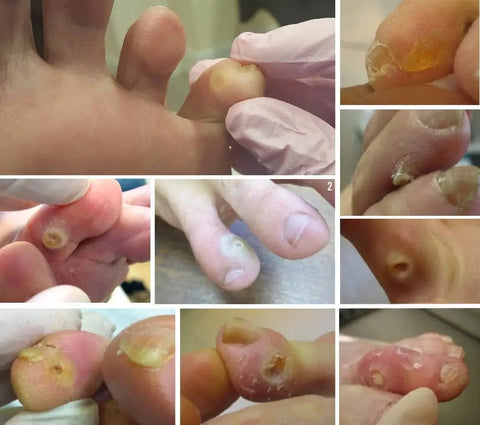
A compilation of interdigital corns: hard corns (top three images), soft corns (middle left and centre), ulcerated corns (right third from top, bottom left and middle) and an infected ulcerated corn (bottom right). Sources: footache.co.uk, almawiclinic.com, consultant360.com, elitepoditry.com.au, podiatrypractice.com.au.
[There are also seed corns (heloma millare) and neurovascular corns but both are much less common].
Soft Corns
Soft corns on feet occur between the toes, although you can get hard corns there too. Sweat is less able to evaporate from between the toes and so the thick patch of skin gets waterlogged and soggy (macerated). The proliferation of white rubbery skin can hide the corn beneath. It can look a lot liketineawhen it occurs deep in the web space, like the image below. The difference is tinea is usually itchy while a soft corn is more likely painful and there’s more hyperkeratosis.
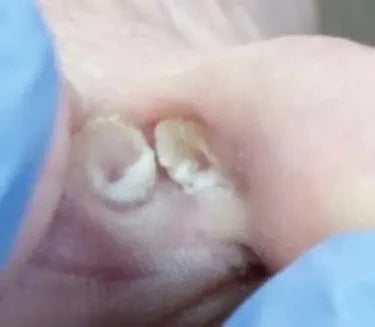
Interdigital soft corn. The white rubbery skin can be mistaken for tinea. Remeber, interdigital corns occur where two bones press together, so it’s common to see two adjacent corns. Source: healthfirstsoutham.yourfootpain.co.uk
The thickened skin of a soft corn still presses on the nerve endings and causes pain, regardless of how soft it is. If this goes on unabated, it can ulcerate. Ulceration just means the deeper skin layers under the corn have broken down to form a sore. The skin has adapted as much as it can but the shear force is just too much to handle, so it ulcerates. As soon as the skin becomes open, it can get infected. From there, infection can spread – you can read about worsening infection here.
Even before it ulcerates, the proliferation of macerated skin can be problematic in that it is weak and exhibits a compromised barrier function. This further adds to the likelihood of ulceration and infection.
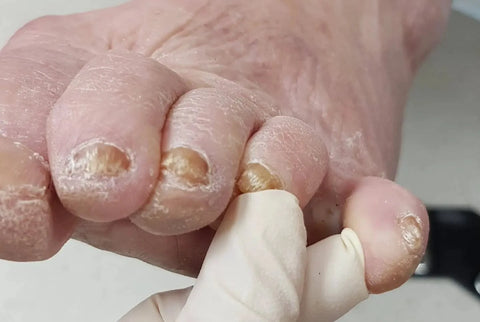
A soft corn at the base of the interdigital space
How to Prevent Callouses and Corns
As discussed in the previous article, callouses and corns tend to recur. Sure you can do lots of things to cushion and deflect pressure – and you should. But because hyperkeratosis builds up day after day, it’s practically difficult to nullify the forces with 100% effectiveness, 100% of the time, day after day, week after week, month after month. But the more you can implement these measures, the more you can slow it down.
Here Are The Options For Corns and CallousesUnder The Foot:
- Cushioned insoles– Insoles cushion and absorb shear. Thick is better than thin. Spenco is a good choice and you can get these from most sports stores or podiatrists. Remember this is the insoles in your shoes are worn out or flimsy to start with.
- Donut pads– Go big, usefelt donut padsrather than moleskin donut pads.
- Calf stretches / heel lifts / orthotics / gait retraining– These can help in some situations.
Here Are The Options For Corns and CallousesOn Toes:
- Foam toe device– Foam interdigital wedges or tubes can provide a little bit of cushioning. Foams tend to bottom out rather quickly.
- Gel toe protectors– Gel toe interdigital wedges,sleeves and capsreduce pressure and absorb shear infinitely better, and longer, than foams.
- Otoform K toe devices–Otoform K interdigital wedges and toe-propsare excellent at reducing pressure – better than the gel toe protectors.
- Shoe-fit– Ensure the toebox of yourshoes are wide enough and deep enoughto accommodate the shape of your toes.

